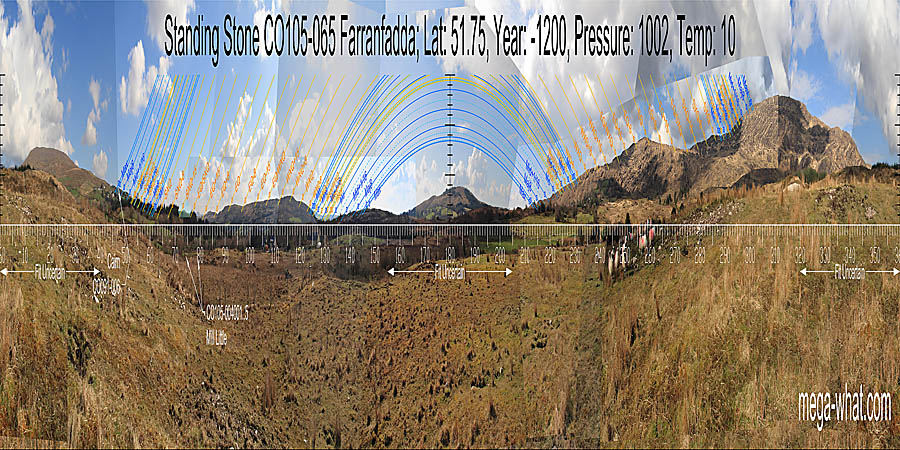 Farranfadda Standing Stone is in Coomhola, about 4km north of Ballylicky. There are a number of other standing stones in the general area.
Farranfadda Standing Stone is in Coomhola, about 4km north of Ballylicky. There are a number of other standing stones in the general area.
From this site: South is close to a hilltop [Pic]. North is in a dip [Pic].
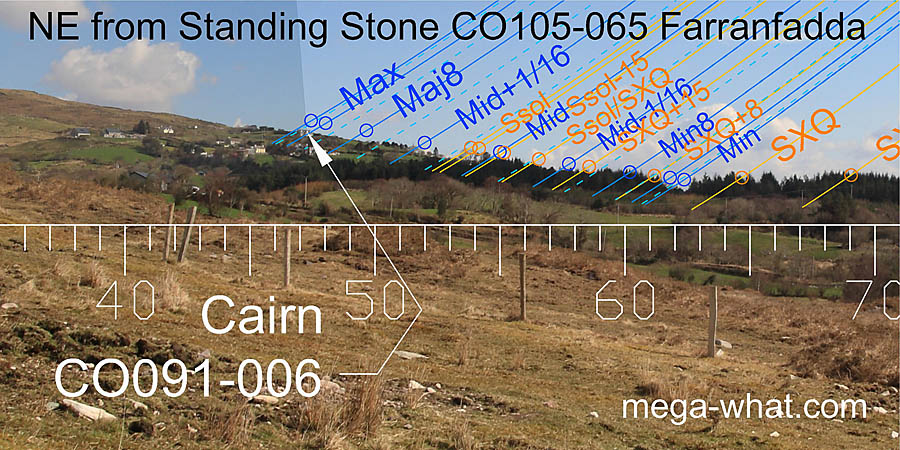 It is intervisible with the Mill Little monument complex, is 310m or so north-west of it, and has a much better view of the eastern horizon.
In particular Cairn CO091-006, 1.4km to the north-east, is on the horizon in a position that marks the most extreme northerly moonrise or
major standstillLunistice positions vary cyclically over an 18.6 year period but are fairly static for more than a year at either end of the range.
Unfortunately, most of the north-east quadrant is obscured by trees.
It is intervisible with the Mill Little monument complex, is 310m or so north-west of it, and has a much better view of the eastern horizon.
In particular Cairn CO091-006, 1.4km to the north-east, is on the horizon in a position that marks the most extreme northerly moonrise or
major standstillLunistice positions vary cyclically over an 18.6 year period but are fairly static for more than a year at either end of the range.
Unfortunately, most of the north-east quadrant is obscured by trees.
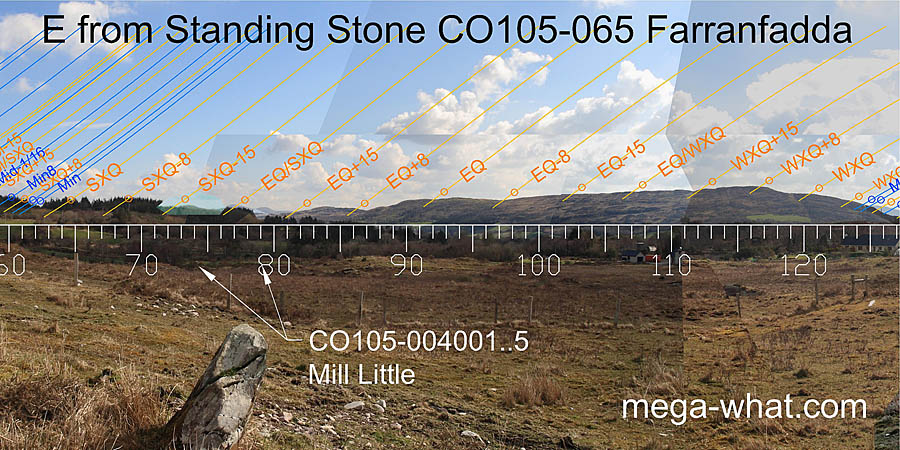 The eastern horizon is well fitted to the central part of the year. Equinox / summer cross-quarter midpoint is on the far top within the dip.
The eastern horizon is well fitted to the central part of the year. Equinox / summer cross-quarter midpoint is on the far top within the dip.
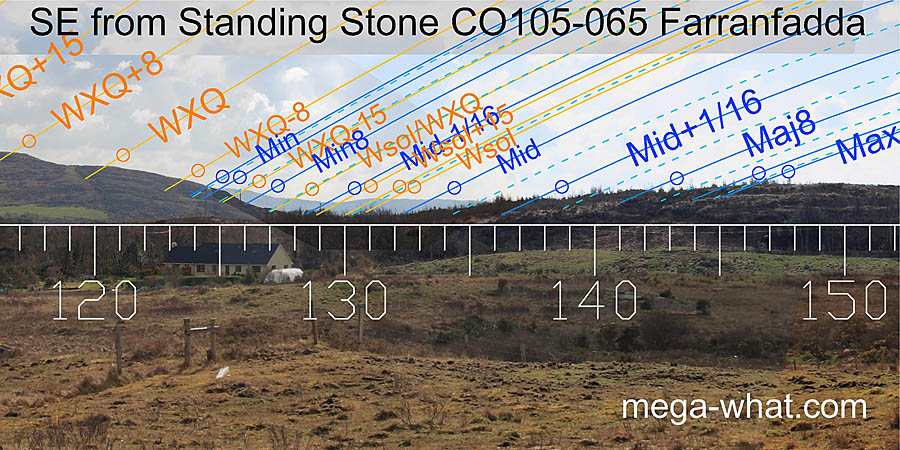 To the south-east, winter cross-quarters are at the top of a slope.
The minor end of the lunisticeLunistices are the most northerly and southerly moons of the month. The lunar equivalent of solstices - more.
range is at the intersect with more distant horizons and the lunar extreme (major standstillLunistice positions vary cyclically over an 18.6 year period but are fairly static for more than a year at either end of the range
) is on a hilltop.
To the south-east, winter cross-quarters are at the top of a slope.
The minor end of the lunisticeLunistices are the most northerly and southerly moons of the month. The lunar equivalent of solstices - more.
range is at the intersect with more distant horizons and the lunar extreme (major standstillLunistice positions vary cyclically over an 18.6 year period but are fairly static for more than a year at either end of the range
) is on a hilltop.
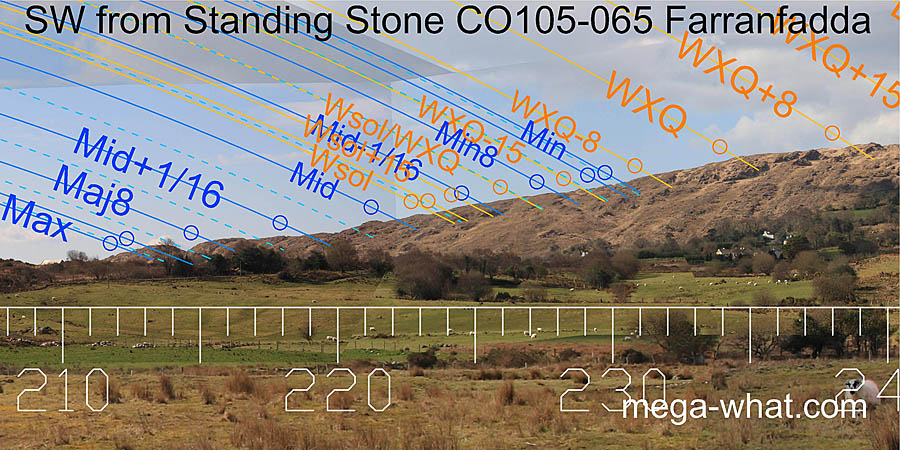 To the south-west, winter cross-quarters are again at the top of a slope with major standstillLunistice positions vary cyclically over an 18.6 year period but are fairly static for more than a year at either end of the range
at the bottom.
To the south-west, winter cross-quarters are again at the top of a slope with major standstillLunistice positions vary cyclically over an 18.6 year period but are fairly static for more than a year at either end of the range
at the bottom.
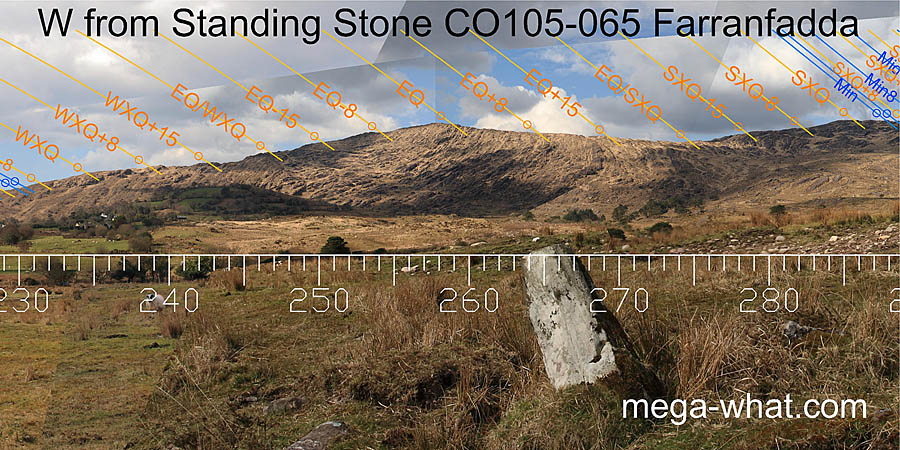 Westwards, equinox sunset is on top of the hill and summer cross-quarter is, once more, at the top of a slope. The dip in between these two is also midway in time between them.
Westwards, equinox sunset is on top of the hill and summer cross-quarter is, once more, at the top of a slope. The dip in between these two is also midway in time between them.
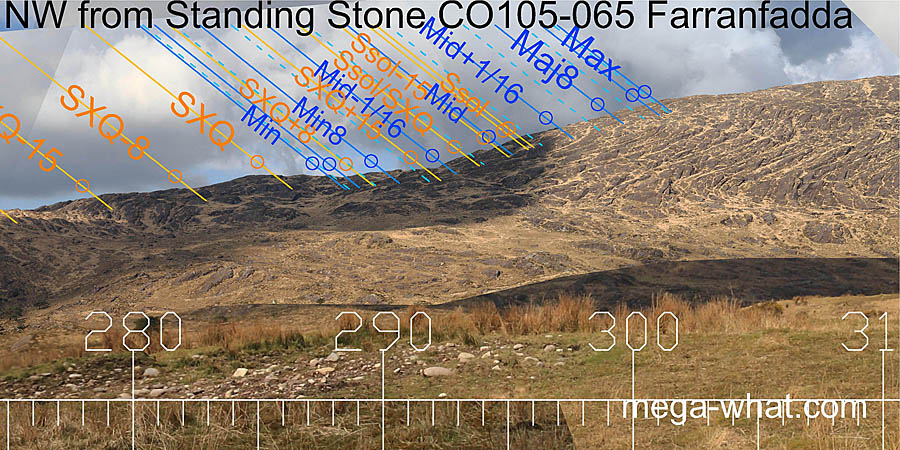 The north-west is also well fitted to the solar and lunar nodal cycles with many useful coincidences.
The north-west is also well fitted to the solar and lunar nodal cycles with many useful coincidences.
There are a number of other Standing Stones not far away and it seems likely that they are all related to and/or later than the Mill Little sites as there are no other major monuments in the area.
References
- Archaeological Survey of Ireland, record details. www.archaeology.ie/archaeological-survey-ireland
- RONAN, S. et al. 2009 Archaeological Inventory of County Cork, Volume 5. Dublin: Stationary Office. p31, no 15441.
